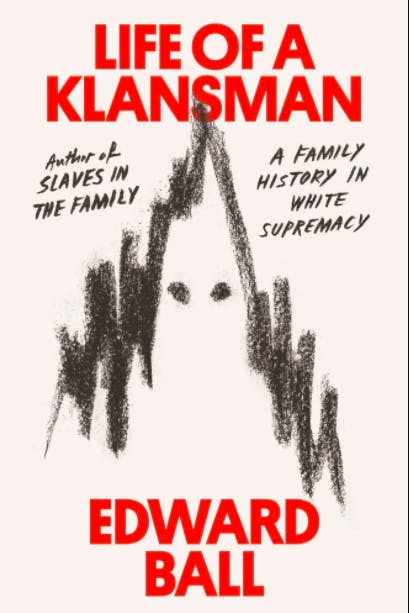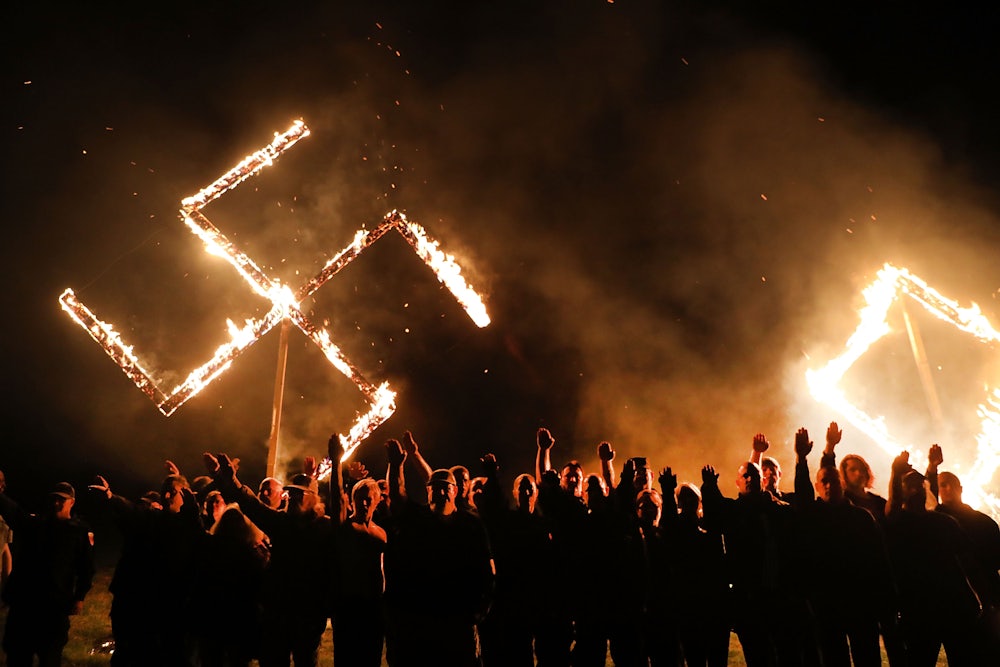The killing began just after noon. On July 30, 1866, a parade of 300 Black townsfolk (with some white advocates) marched toward the Mechanics Institute in New Orleans to demand their rights: Two years previously, the State Constitutional Convention had given Black people new freedoms but not enfranchisement.
Then the fire station bells began to ring. When the white militia ran onto the scene, they were not immediately identifiable as such. According to a person who saw it happen, “A fire company came down with their fire apparatus as if they were running to a fire, which is a very good way to collect a crowd, and headed to the front of the Mechanics Institute.” The firefighters—they were the actual local fire brigade—were joined by members of the actual local police and a few ex-soldiers, who were of neither affiliation but keen to join in anyway (these last were identified by their single rolled-up shirtsleeve).

The Civil War had ended only a year before. This gang of mostly former Confederate soldiers, primed in the art of killing other Americans in an organized fashion, attacked an unarmed crowd, including women and children as well as several of the very first Black people in the American South to enter politics. Protesters tried to use sticks and stones to defend themselves from the white gang’s guns and knives, but the attack continued for three hours. “After that,” another eyewitness said, “there was nobody left to kill.”
Edward Ball tells this story in his new book, Life of a Klansman: A Family History in White Supremacy. Ball’s subject is his own ancestor, Polycarp Constant Lecorgne, or “P.C.,” who was a firefighter in that very station, a KKK member, and a violent white supremacist bent on tearing down reconstruction in post-Civil War Louisiana.
One of a large wave of nonfiction books about white supremacy published this summer, Ball’s strategy is synecdochic: In writing a microhistory about this individual, he builds a psychological portrait of white supremacy, which then radiates outward and across time, to explain the motives and historical background behind racist violence.
Through documentary evidence, interviews with living descendants of the massacre’s survivors, and almost novelistic meditation on the meaning of it all, Ball characterizes P.C. as a petty and disappointed man, outshone by his more successful brothers and embittered by the financial loss abolition had brought him. Ball writes predominantly in the present tense, making us feel the structural (and genetic) links between himself—the white writer—and Lecorgne, the white supremacist: “Constant is an agent of racist terror, and he is one of us.”
A comparable strategy underpins Seyward Darby’s new book, Sisters in Hate: American Women on the Front Lines of White Nationalism, which is otherwise written from the other end of the historical kaleidoscope. Hers is a portrait of the fringe white supremacist personalities recategorized as culturally mainstream by that hater of the traditional media, President Donald Trump, and his publicity machine. She trains her eye specifically on the heat map of feminine influence. In profiling three female white supremacist media figures named Corinna, Ayla, and Lana, Darby’s book, read in conjunction with Ball’s, demonstrates how precisely the mindset of men like P.C. Lecorgne has survived into the present day and how women in the movement, by seeming relatively harmless, have generally escaped the judgment of history.
In their report on the Mechanics’ Institute Massacre, Ball writes, Congress described how the violence spread across New Orleans: “Colored persons at distant points, peaceably pursuing their lawful business, were attacked by the police, shot, and cruelly beaten.” Once the target was dead, the report went on, “the face of a man just breathing his last was gashed by a knife or a razor in the hands of a woman.” These female perpetrators, however, are frequently forgotten.
Darby’s three subjects are also disappointed people. Corinna, for example, spent years struggling to make a living before eventually converting to Islam and becoming a successful professional embalmer. She’d always had trouble relating to people, but in the depths of her troubles in 2008—rejected by employers and traumatized by the death of her younger brother—Corinna turned to white supremacy online to find people who would praise her, find her important. She posted her first message on the hate site Stormfront in spring of that year:
Hello, I am new, so please forgive my ignorance.
A lot of the stuff I have read here says that WN [white nationalism] is not the same as supremacy and some members are adamant that they are not white supremacists.
But . . . maybe I am one? I believe:
—white people are generally more hard-working, honest, decent, dignified, and intelligent than nonwhites...
It goes on, but you get the picture. Under a thin layer of reasonableness—she’s polite, hedging with “but” and “maybe”—Corinna couches her hatred of nonwhite people in an argument for whites’ superior qualities. Like an avalanche, the positive feedback from the majority-male online community deluged Corinna, and her fate for the next few years was sealed.
Lana Lokteff, host of the white supremacist podcast Radio 3Fourteen, is another of Darby’s subjects. In her virulently hateful broadcasts, you can hear her racism inflected by her gender and position in the media landscape. “To me,” she once said on air, “race is metaphysical; the formation of different biological expressions is miraculous. Racial differences are the manifestations of the spiritual expressed in physical form. Racial awareness is spiritual to me—it’s mysticism when you combine the knowledge of one’s family lineage as well as a spiritual effort to delve into your people’s primordial and mythical times.”

In these sentences, Lokteff blends the nineteenth-century myth of race as biologically essential—connected to a romantic and nationalist notion of natural purity—with the turn to wellness and spirituality in women’s online media. The “mysticism” of her rhetoric is not just fascistic but also aspirational, almost Instagrammable—her ideal woman is white, of course, but also in touch with her soul.
Darby’s key intervention is to show just how far these women go in comparison to their male peers. In an interview with Lana in 2014, for example, the white supremacist Tim Murdock, aka “Horus the Avenger,” told her that she must continue to repeat “consistent messages” because “women are just as effective, if not more.” Speaking to Lana, he said, “You can get away with saying a lot more than I can get away with.”
Why do people believe things that are not true? Darby cites a 2015 study showing that “reading a statement like, ‘A sari is the name of the short pleated skirt worn by Scots,’ increased participants’ later belief that it was true ... even if they could correctly answer the question ‘What is the name of the short pleated skirt worn by Scots?’”
Repetition is the key to convincing anybody of anything, Darby concludes. “Racist pundits repeat the same tropes, cite the same falsehoods, make the same generalizations” on YouTube and a thousand other sides—an eternal “queue of disinformation.” Repeat, repeat, repeat, Darby writes, “and make people believe.” She offers copious evidence, including the example of white supremacists praising women for their childbearing abilities, tricking them into feeling like icons of the movement, while those same male leaders agitate for women staying out of politics and inside the home.
Ball offers a particularly piercing psychoanalytic reading of the present, even though his subject is the past. Writing about P.C. Lecorgne, Ball asks: “What lies in the unconscious of this ordinary man who cannot keep a full work calendar and who terrorizes people?” The answer is “a hundred things”: “Bloodlust from war. Disgust with blackness. Subservience to authority. Attraction to blackness. Insecurity of self. Fear of blackness. Rage at scapegoats, defined by their blackness.”
Repeat, repeat, repeat, and it grows larger. Read alongside one another, Darby and Ball’s books—though ostensibly so different—are like guides to that massive bedrock half-hidden by the dirt.
Here at the Mechanics Institute, Ball writes, is where the official record documents 38 dead Black people, but an eyewitness saw 200. Here is the courthouse where the KKK escaped retribution of any kind; here is the man and the state and the organization, how it all happened and where. Here is the literal repetition of racist violence in historical events—over and over, their multiplication dizzying—framing the rhetorical repetition employed by Darby’s subjects. Their lies about meaning no harm to Black Americans—“I’m not a racist but … ”—are hollow, nihilistic, and historically ignorant, and the proof is in the record.
